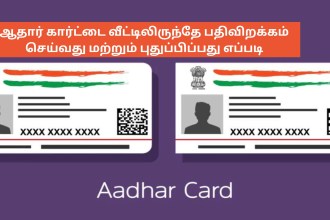Mumbai Terror Attacks 26/11: Unraveling the Tragedy, Resilience, and Lessons Learned
Mumbai Terror Attacks: Introduction
Mumbai Terror Attacks, the night of November 26, 2008 is recorded as a dark chapter in the history of Mumbai, India. The city, known for its resilience and spirit, faced an unprecedented terrorist attack that shook the entire country. This article explores the complex details of the 26/11 Mumbai terrorist attacks, examining the tragedy that unfolded, the resilience displayed by Mumbaikars and the lasting lessons learned from that fateful night.
Mumbai Terror Attacks: Background
Mumbai Terror Attacks: Origin and planning
Mumbai Terror Attacks, the carefully planned and coordinated attacks were carried out by ten terrorists belonging to the Pakistan-based terrorist organization Lashkar-e-Taiba. The attackers had infiltrated into Mumbai via sea with the intention of causing maximum casualties and creating fear.
Mumbai Terror Attacks: Target and location
Mumbai Terror Attacks, the terrorists targeted several high-profile locations including Chhatrapati Shivaji Terminus (CST), Taj Mahal Palace Hotel, Oberoi Trident Hotel, Leopold Cafe, Cama Hospital and Nariman House. The diverse selection of targets was intended to disrupt normal life and create widespread panic.
Mumbai Terror Attacks: The unfolding tragedy
Mumbai Terror Attacks: CST Station
Mumbai Terror Attacks began at CST station, where gunmen opened fire on passengers. The crowded railway station turned into a scene of chaos and terror as innocent passengers became victims of indiscriminate firing.
Mumbai Terror Attacks: Hotel siege
Mumbai Terror Attacks: The terrorists then stormed luxury hotels including the Taj Mahal Palace and Oberoi Trident, taking hostages and engaging in a prolonged shootout with security forces. Hotels, symbols of prosperity, became battlegrounds in the fight against terror.
Mumbai Terror Attacks: Leopold Café and Nariman House
Leopold Café, a popular hangout, witnessed a horrific attack, and Nariman House, a Jewish community center, became another hostage situation. The rampage of terrorists left an indelible mark on these iconic places.
Mumbai Terror Attacks: Resilience and spirit of Mumbaikars
Mumbai Terror Attacks: Local Heroes and Emergency Services
Mumbai Terror Attacks: Amid the chaos, Mumbaikars showed remarkable resilience. Local heroes emerged, helping victims and providing assistance to law enforcement. The city’s emergency services worked tirelessly to rescue the hostages and kill the terrorists.
Mumbai Terror Attacks: Unity and solidarity
Mumbai Terror Attacks evoked a sense of solidarity and unity among Mumbaikars. People from different walks of life came together to support each other, highlighting the city’s indomitable spirit in the face of adversity.
Mumbai Terror Attacks: Role of Social Media
Mumbai Terror Attacks marked a turning point in the use of social media during crises. Citizens used platforms like Twitter and Facebook to share real-time information, provide assistance, and coordinate relief efforts, demonstrating the power of technology in times of crisis.
Mumbai Terror Attacks: Lessons Learned and Impact on Counterterrorism
Mumbai Terror Attacks: Security Improvements
Mumbai Terror Attacks: After 26/11, India initiated significant security reforms. The National Investigation Agency (NIA) was established, and there was a renewed focus on intelligence sharing and coordination among security agencies.
Mumbai Terror Attacks: Maritime Security Enhancements
Mumbai Terror Attacks: The terrorists reached Mumbai by sea, leading to a reassessment of maritime security. The Government of India implemented measures to increase coastal surveillance and strengthen security against maritime threats.
Mumbai Terror Attacks: International cooperation
The Mumbai terror attacks underlined the need for international cooperation in the fight against terrorism. India sought diplomatic support and intelligence sharing to prevent future attacks and destroy terrorist networks.
Mumbai Terror Attacks: Commemorations and Memorials:
Mumbai Terror Attacks: 26/11 Anniversary Celebrations
Every year, on the anniversary of the Mumbai terrorist attacks, the nation observes a solemn remembrance day. Tributes are paid to the victims, and ceremonies are held to honor the resilience of survivors and the sacrifice of security personnel.
Mumbai Terror Attacks: Monuments across Mumbai
Mumbai Terror Attacks: Several memorials and plaques have been erected across Mumbai to commemorate those killed during the attacks. These include the 26/11 Memorial at Police Gymkhana and the Chhatrapati Shivaji Terminus Martyr Memorial.
Mumbai Terror Attacks: Ongoing Challenges and Global Perspective
Mumbai Terror Attacks: Terrorism as a global threat
The Mumbai terror attacks highlighted the global nature of terrorism. This prompted discussion on the need for a united front against extremism and the importance of addressing the root causes of radicalization.
Mumbai Terror Attacks: Constant Threats
Despite increased security measures, the threat of terrorism remains. The Mumbai attacks serve as a sobering reminder that vigilance and preparedness are vital to reduce the risk of future incidents.
Mumbai Terror Attacks: Conclusion
The Mumbai terrorist attacks on 26/11 left an indelible mark on the city, the country and the world. While the tragedy exposed weaknesses in the security infrastructure, it also demonstrated the resilience and unity of Mumbaikars. The lessons learned from that fateful night continue to shape counter-terrorism strategies, emphasizing the importance of international
Also Read: Tukaram Omble Story: The Braveheart who Stood Against Terrorism








